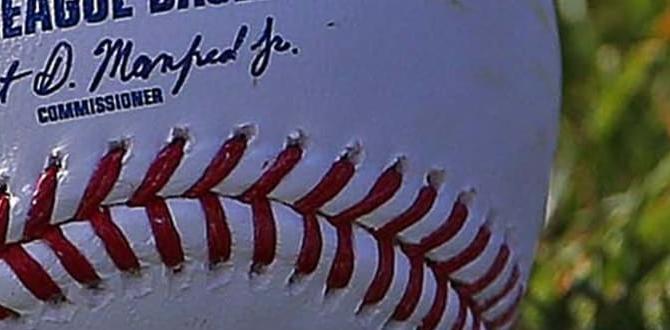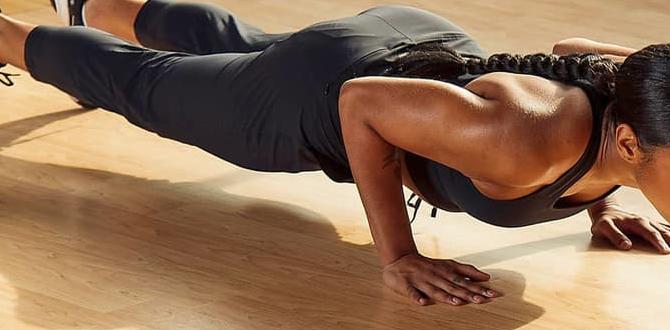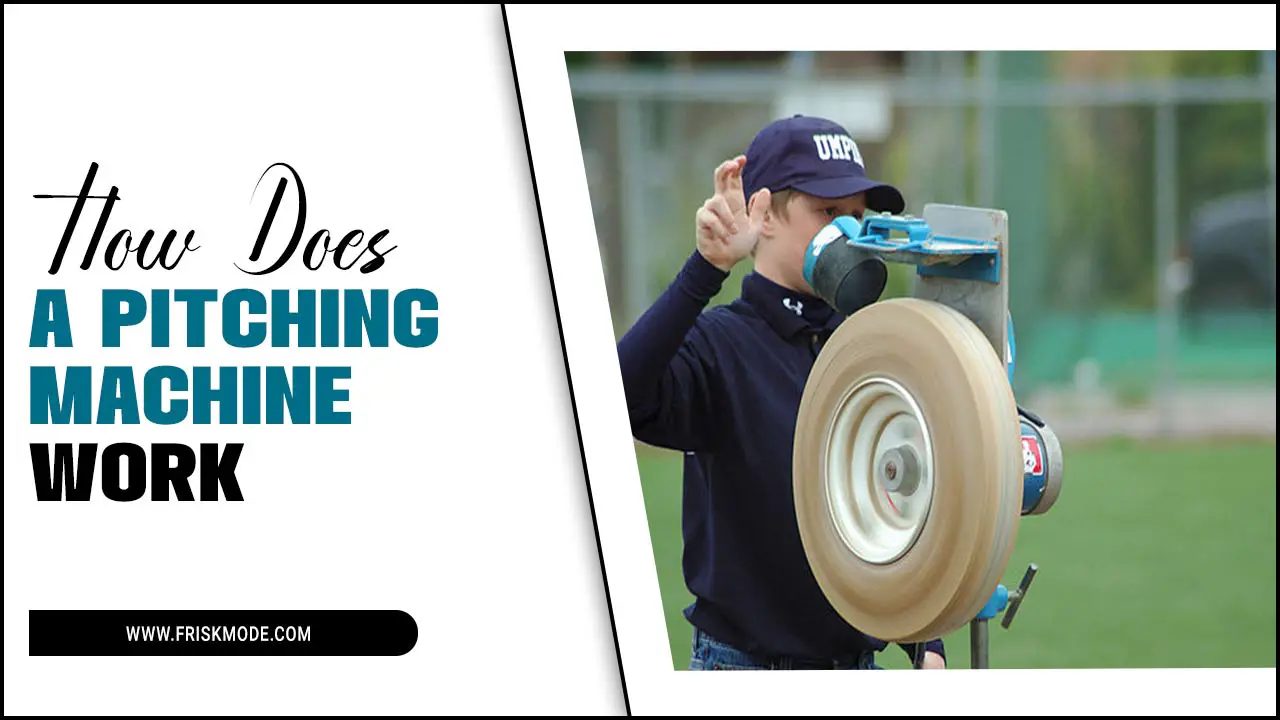Easton catchers knee savers are key to protecting a catcher’s knees from impacts and improving comfort during long games. They provide crucial support, absorb shock, and help prevent injuries, making them a must-have piece of gear for any serious catcher.
Catching in baseball is a demanding position. You spend a lot of time down on your knees, blocking balls and making quick plays. This constant pressure can really take a toll on your knees, leading to soreness and even injuries over time. It’s a common frustration for catchers of all ages, from youth leagues right up to the pros. But what if there was a simple way to keep your knees safer and more comfortable? That’s where Easton catchers knee savers come in. They’re designed to give your knees the protection they need, so you can focus on the game. In this guide, we’ll explore why these knee savers are so important, what makes Easton’s stand out, and how they can help you play your best.
Why Catchers Need Knee Savers, Especially Easton’s
Being a catcher is tough. You’re the quarterback of the defense, constantly moving, crouching, and absorbing impacts. Your knees are at the forefront of this action, facing hard-hit foul balls, grounders, and the relentless pressure of staying in a low stance. Over time, this can lead to aches, pains, and more serious issues like patellofemoral pain syndrome or even cartilage damage. Many players, from young amateurs to seasoned professionals, experience this discomfort.
This is precisely why specialized equipment like knee savers is so valuable. They act as a buffer between your knees and the hard ground, as well as the impacts you receive. For catchers, this protection is not just about comfort; it’s about preventing long-term damage and ensuring you can perform at your best, game after game, season after season.
The Unique Benefits of Easton Catchers Knee Savers
Easton has a long-standing reputation in baseball for producing high-quality gear, and their catchers knee savers are no exception. They understand the unique demands placed on a catcher’s body and engineer their products to meet those needs. Here’s what sets Easton knee savers apart:
- Advanced Shock Absorption: Easton often incorporates multi-density padding and specialized foam materials. These technologies are designed to effectively disperse the force of impacts, significantly reducing the shock transmitted to your knees. Think of it like a built-in shock absorber for your joints.
- Ergonomic Design: Professionals and serious players demand gear that moves with them. Easton’s knee savers are typically designed with the catcher’s natural range of motion in mind. They aim for a secure, comfortable fit that doesn’t restrict movement, allowing you to crouch, block, and throw effectively.
- Durable Construction: Baseball is a rugged sport, and catcher’s gear takes a beating. Easton uses robust materials and reinforced stitching to ensure their knee savers can withstand the rigors of frequent use, intense games, and training sessions. This means they’re an investment that will last.
- Breathability and Comfort: Long games can get hot, and uncomfortable gear is a distraction. Easton often incorporates breathable fabrics and ventilation channels in their designs to help manage heat and moisture, keeping you more comfortable during extended play.
When you’re looking for equipment that supports peak performance and protects your health, choosing a brand like Easton that understands the game and invests in innovation makes a significant difference.
Understanding Catcher’s Knee Pain
Before diving deeper into how knee savers help, it’s important to understand what causes common knee pain for catchers. The constant squatting position puts significant stress on the kneecap (patella) and the surrounding cartilage and ligaments. When you add blocking foul balls, with their sharp, forceful impacts, the stress intensifies.
Here are some common issues catchers face:
- Patellofemoral Pain Syndrome (Runner’s Knee): This is pain around or behind the kneecap, often caused by overuse or misalignment of the kneecap. The repetitive bending and straightening of the knee, combined with direct impact, can aggravate this.
- Bursitis: The knee has small fluid-filled sacs called bursae that cushion the joints. Repeated pressure on the knee can irritate and inflame these bursae, leading to pain and swelling, especially on the front of the knee.
- Meniscus Tears: The meniscus is C-shaped cartilage that acts as a shock absorber between your thighbone and shinbone. Sharp twists or direct impacts can cause tears in this cartilage, leading to pain, swelling, and difficulty bending the knee.
- General Soreness and Fatigue: Even without a specific injury, the sheer volume of stress on a catcher’s knees during a game can lead to significant soreness and fatigue, impacting performance and recovery.
The goal of catcher’s knee savers isn’t just to cushion the blow from a pitch or a foul ball, but also to alleviate the constant pressure from prolonged squatting. By distributing weight and providing a softer surface, they help reduce the strain on the joint.
How Knee Savers Work to Protect You
Knee savers, especially those designed for elite play like Easton’s offerings, work on a few key principles:
-
Impact Dissipation: They spread the force of an impact over a larger area. Instead of a concentrated jolt directly to your kneecap and tibia, the energy is absorbed and distributed by the padding.
-
Pressure Distribution: When squatting for long periods, the entire weight of your upper body is often borne by the knee joint. Knee savers create a barrier that distributes this pressure more evenly, preventing sharp pressure points.
-
Elevation (Slight): Some designs might offer a very subtle elevation which can slightly alter the angle of force when in a squat, potentially reducing strain on certain parts of the knee. This is often a secondary effect rather than a primary design goal.
-
Warmth and Support: While not their primary function, the material can help retain some warmth, which can be beneficial for muscles and joints, and offer a mild compression effect that some athletes find supportive.
Think of wearing a thick, cushioned mat under your knees when kneeling on a hard surface. Knee savers are like a more advanced, athletic version of that concept, engineered specifically for the dynamic movements and impacts of baseball.
Easton’s Professional Choice: What Makes Them Stand Out?
When we talk about “Easton catchers knee savers for professionals,” we’re referring to the high-performance standards that professional players demand and that Easton strives to meet. Professional athletes are constantly pushing their bodies to the limit, and their gear must not only withstand this but actively contribute to their performance and longevity.
Easton’s professional-grade knee savers often feature:
- Advanced Padding Technologies: These aren’t just generic foam. Easton might use closed-cell foams that resist moisture and maintain their cushioning properties, or proprietary gel inserts designed for maximum impact shock absorption.
- Anatomical Contouring: Professional gear is often designed with body mechanics in mind. This means the knee savers will likely follow the natural curves of the knee and leg for a secure, non-slip fit.
- Strategic Reinforcement: Key areas prone to wear and tear, or that require extra padding, will be reinforced. This could include higher-density foam in crucial impact zones or tougher outer materials to prevent abrasion.
- Lightweight Design: While padding is essential, professionals also need to maintain agility. Easton strives to achieve maximum protection with minimal added weight, so the gear feels like an extension of the player, not a burden.
- Integration with Catcher’s Gear: Often, high-end knee savers are designed to work seamlessly with other catcher’s equipment, like shin guards, ensuring no chafing, pinching, or unwanted gaps.
These features translate into tangible benefits on the field: reduced fatigue, faster recovery between pitches, greater confidence in blocking, and a significant step towards injury prevention.
The Science Behind Easton’s Protection
Easton invests in research and development to create gear that offers superior protection. This often involves:
- Material Science: They experiment with different foams, gels, and composite materials to find the optimal balance of shock absorption, durability, and weight. For instance, comparing typical EVA foam to advanced polymers like PORON® XRD™ can show significant differences in impact reduction.
-
Biomechanics Research: Understanding how the knee joint functions under stress is crucial. Easton likely consults with sports scientists and athletic trainers to design products that align with a catcher’s biomechanics. This ensures the knee savers protect without hindering natural movement.
- Athlete Testing: Professional athletes are invaluable for their feedback. Easton subjects prototypes to rigorous testing in real-game scenarios, gathering insights that lead to design refinements. A player’s experience of comfort, fit, and effectiveness directly influences the final product.
This commitment to science and athlete collaboration is what elevates their equipment from simply functional to truly essential for those who compete at the highest levels. For a glimpse into the principles of athletic performance and injury prevention, resources from institutions like the Mayo Clinic offer valuable insights into protecting athletes.
Choosing the Right Easton Knee Savers
While Easton offers high-quality knee savers, not all models are identical. The “professional” designation often points to their top-tier lines, but it’s still important to consider what’s best for your specific needs. Here’s what to look for:
Key Features to Consider:
-
Padding Thickness and Density: Thicker, denser padding generally offers more protection but can sometimes feel bulkier. For professionals, there’s a delicate balance.
-
Material Composition: Look for advanced materials that offer superior shock dispersion and breathability.
-
Fit and Straps: Ensure the knee savers stay in place without being too constrictive. Adjustable straps are a plus. Many top-tier models use hook-and-loop closures for a secure, customizable fit.
-
Durability and Construction: Check reviews or product descriptions for information on reinforced stitching and high-quality outer materials that resist abrasion.
-
Compatibility: If you have specific shin guards, ensure the knee savers won’t interfere with their fit or function.
Easton Model Examples (General Categories)
While specific model names change, Easton typically offers tiered lines that cater to different levels of play. For professionals, you’d be looking at their highest-end offerings, often found in lines designated for elite or competitive players. These are usually characterized by the most advanced padding and durable construction.
For instance, you might find:
-
Elite Series: Often featuring proprietary foam technologies and ergonomic designs, these are built for maximum protection and performance.
-
Pro Series: Similar to Elite, these may focus on specific features that pros prioritize, like extreme durability or enhanced mobility.
It’s always a good idea to check current product catalogs or reputable sports equipment retailers for the most up-to-date models and their specific features.
Integrating Knee Savers into Your Routine
Simply owning good knee savers isn’t enough; they need to be used correctly and consistently to provide maximum benefit. Integrating them smoothly into your catching routine is key.
Proper Usage and Care:
-
Secure Fit: Always ensure the straps are adjusted to hold the knee savers snugly in place without cutting off circulation. They should feel stable when you’re in a catching stance and during movement.
-
Under Gear or Over Gear: Most catcher’s knee savers are designed to be worn under your shin guards. They can sometimes be worn over thin leggings but generally not over bulky padding. Check the manufacturer’s instructions for your specific model.
-
Break-In Period: Like most athletic gear, some knee savers might require a short break-in period. Wear them during practice sessions to get accustomed to the feel and ensure they conform to your knee shape.
-
Cleaning: Follow the manufacturer’s care instructions. Typically, this involves hand washing with mild soap and water and air drying. Avoid machine washing or drying, as this can damage the padding and materials.
- Inspection: Regularly check your knee savers for signs of wear and tear, such as thinning padding, ripped seams, or degraded strap material. Replace them when they no longer provide adequate protection or comfort.
When to Wear Them:
For a catcher aiming for professional-level protection, wearing knee savers should be a staple:
- During Every Game: This is non-negotiable if you’re serious about knee health and performance.
- During Intense Practices: Practices that involve a lot of blocking drills, live batting practice, or simulated game situations.
- During Conditioning Workouts: Any workout that involves prolonged kneeling or exercises that put stress on your knees.
Consistency is crucial. Making them a habit ensures you’re always protected, preventing cumulative stress that can lead to injuries down the line.
Beyond Knee Savers: A Holistic Approach to Catcher Health
While Easton catchers knee savers are an excellent tool, they are just one part of a comprehensive strategy for maintaining a catcher’s health and enhancing performance. A truly elite catcher considers their entire physical well-being.
Strength and Conditioning:
Building stronger muscles around the knee joint can provide natural support and resilience. Key areas to focus on include:
-
Quadriceps and Hamstrings: Strong quads help control knee extension, while strong hamstrings assist in deceleration and stability.
-
Glutes: Strong gluteal muscles are vital for hip stability, which directly impacts knee alignment and function.
-
Calves: Strong calf muscles help absorb shock from the ground up.
Exercises like squats, lunges, deadlifts, and calf raises are fundamental. Incorporating plyometrics can also improve explosive power and shock absorption. Always ensure proper form to maximize benefits and minimize injury risk, just as you would when learning any new baseball drill. Resources from organizations like the USA Baseball often provide excellent insights into age-appropriate training methods.
Flexibility and Mobility:
Good range of motion in the hips, ankles, and knees is essential for a catcher to maintain a low, stable stance and move efficiently. Regular stretching and mobility work, including dynamic warm-ups and static stretching post-activity, can help prevent tightness and improve performance.
Nutrition and Hydration:
Proper fueling and hydration are critical for muscle recovery and overall joint health. Anti-inflammatory foods and adequate water intake support the body’s natural healing processes.
Proper Technique:
Working with coaches to refine blocking technique, base-stealing defense, and receiving skills can reduce unnecessary stress on the knees. Efficient movement patterns minimize wear and tear.
By adopting a well-rounded approach to training and recovery, catchers can maximize the benefits of protective gear like Easton knee savers, leading to a longer, more successful playing career.
Frequently Asked Questions About Easton Catcher’s Knee Savers
Q1: Are Easton catchers knee savers really necessary for younger players, or just professionals?
A: While the “for professionals” designation highlights their advanced features and durability, Easton knee savers offer excellent protection for all players, especially young athletes whose bodies are still developing. They help prevent common injuries and build good habits early on.
Q2: How do I know if my Easton knee savers fit correctly?
A: They should feel snug and secure, not too tight to cut off circulation, and not so loose that they shift during movement. They shouldn’t bunch up or pinch. Try them on with your catcher’s gear to ensure they work together comfortably.
Q3: Can I wear knee savers with my existing shin guards?
A: Yes, most Easton knee savers are designed to be worn underneath shin guards. They provide an extra layer of protection and comfort without interfering with the fit of your shin guards.
Q4: How do I clean and care for my Easton knee savers?
A: Typically, you should hand wash them with mild soap and water and let them air dry completely. Avoid harsh chemicals, machine washing






